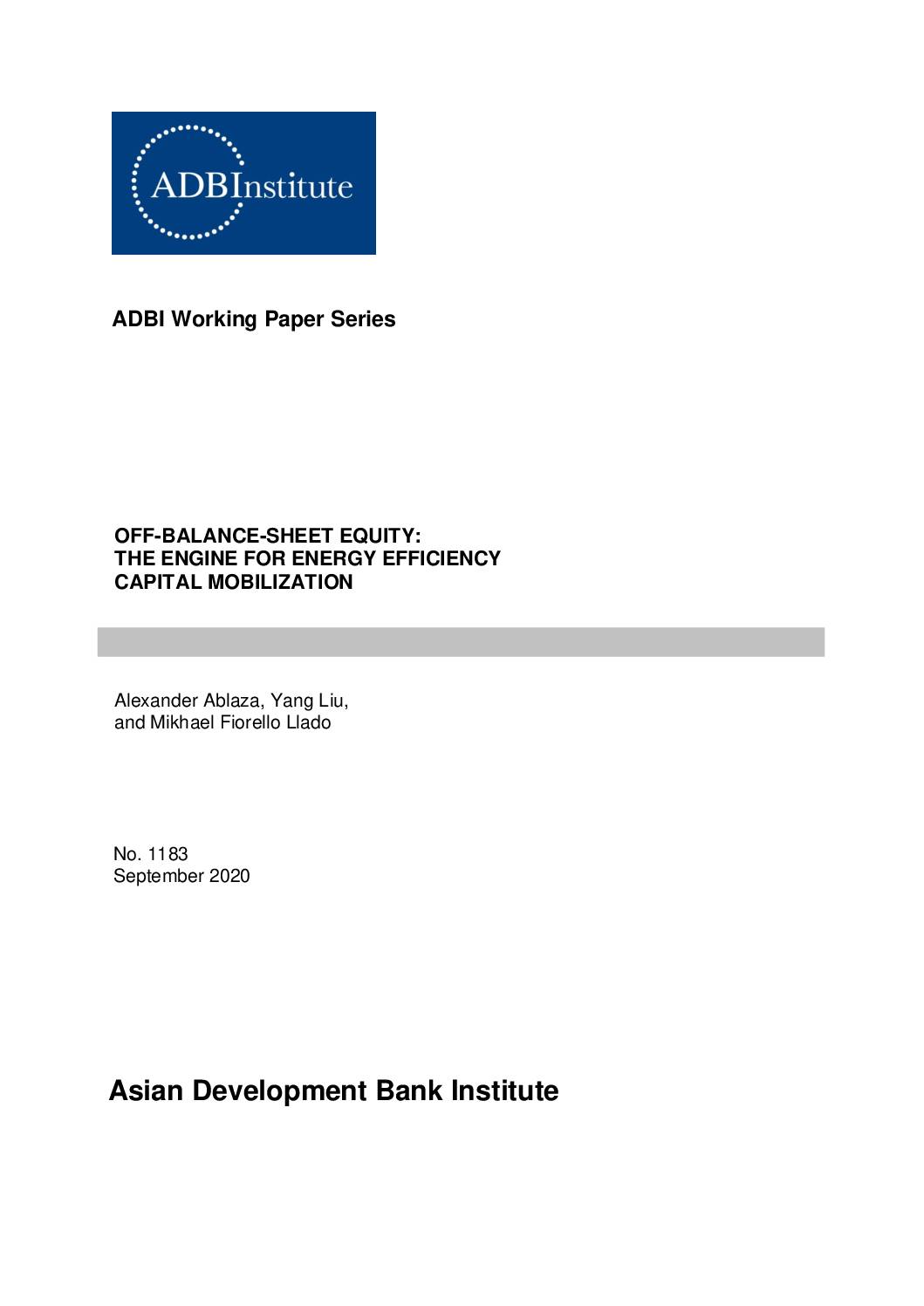The International Energy Agency estimates that $24.5 trillion of energy-efficiency (EE) investments will be needed through 2040. Debt- and self-financed projects are expected to contribute only a third of this capital due to multiple barriers. On the one hand, self-financed projects require upfront capital from companies’ budgets to be spent on EE, which most would regard as a noncore activity. On the other hand, multiple parties face hurdles in a debt-financed project: 1) banks deem EE transactions too small and risky; and 2) most energy service companies (ESCOs) do not have creditworthy balance sheets. Leasing agreements also have unattractive rates and extract too much project value from ESCOs and/or end users. Altogether, these constraints call for nonmainstream, off-balance sheet financial structures that will shift project risks to third parties and facilitate market benefits, such as collateralization of energy savings and engagement of small and medium-sized enterprises. Such structures include ESCO performance contracts, public–private partnership transactions, ESCO guarantee funds, super ESCOs, and other equity channels. These financing modalities require development in both the ESCO/EPC sector and EE policies, which could effectively mobilize and de-risk significant capital volumes.
Link to resource Download sourceShare this

Sectors: ESCO, Finance
Country / Region: China, India, Japan, Korea, Republic of, Malaysia, Philippines, Singapore, Thailand
Tags: energy efficiency capital, energy efficiency finance, energy performance contracting, equity finance, ESCO, off-balance sheet financeIn 3 user collections: Super ESCOs , Investment, Finance & Risk Management , Market Overview including Cases studies
Knowledge Object: Publication / Report
Published by: Asian Development Bank Institute
Publishing year: 2020
Author: Alexander Ablaza, Yang Liu, Mikhael Fiorello Llado
